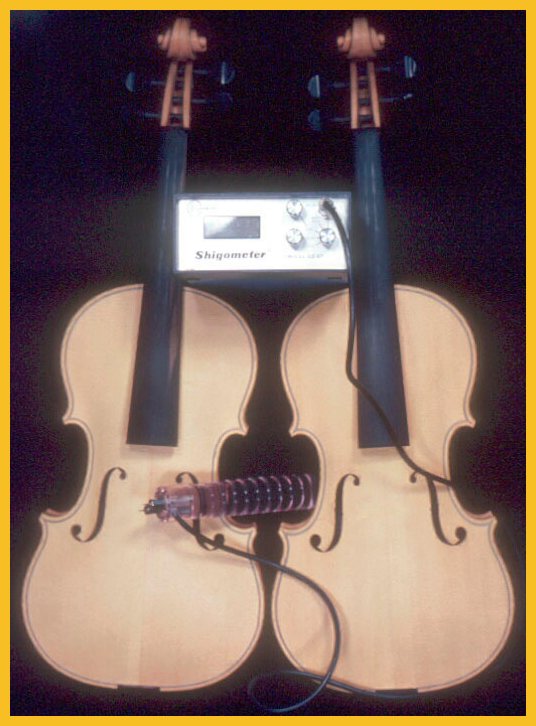

Violin Woods - Violin making has always been more mystery than science. The master violin maker was always a master who knew the secrets of the perfect instrument. Art or skill in craftsmanship has always been a major part of violin (the family of instruments) making. Even today, most violin makers resist the pressures of science. Some makers do not, and progress is being made. There are those that want to know what science can do to help them make a more consistently fine instrument. Today, violins have been made of spruce for the tops and maple for the bottom and sides. Spruce is a wood that has an even pattern of cell types within each growth ring and from growth ring to growth ring little changes occur in cell types and arrangements. Spruce is an "even celled" wood. Maple has the same characteristics, except maple is a wood that has a higher specific gravity than spruce. Maple is a tough wood. The maple portions of the violin act as the body, and the spruce top acts as the reed. Spruce is a wood that does not have a colored aged wood, just as maple does not. The sapwood of spruce has tracheids with open bordered pits. As the wood ages, the pits asperate or close. I believe that wood with many opened pits will produce a better sound. The old masters usually received their wood after it had been floated down a river. It is possible that bacteria may have digested the cellulose strands that close the pits. Bacteria do digest the materials that block pits when logs are ponded. It is also possible that the trees used by the old masters were different in the width of sapwood present. Trees with living low branches will maintain a wider band of sapwood than trees with few lower, the wood in the trunk that is connected to the branch also begins to die. As dying takes place, and the same patterns can be determined. Small pieces of wood can be cut from dried billets to make the tests. Maple is a wood that resists splitting. Care must be taken when selecting maple so that no barrier zones are in the wood. Too often, the wound and obvious barrier zone is cut out of the log or board and the billet for an instrument is cut directly below the defect. Only a sharp eye will then see the barrier zone. There is now some concern over the species of wood used for tops by the old masters. The wood may not have been spruce, but cypress instead. In some cases the cypress was "smoked" with fumes of alkali to treat the wood for a better sound. Much of the art of violin building has centered about the varnish and the construction process. The wood has always been a part of the mystery. And, today the same can be said about the lack of understanding of the construction material-wood. Until violin builders begin to learn more about the wood they use, the mystery and magic will remain. But, maybe that is the way most want it!
See "Violins"
Click here for words on Violins.
Dictionary MAIN
PAGE
Text & Graphics Copyright © 2007
Keslick & Son Modern Arboriculture
Please report web site problems, comments and words of interest,
not found.
Contact